
Contains cover sheet and teacher example/artifact.
- Subject:
- Composition and Rhetoric
- Elementary Education
- Language, Grammar and Vocabulary
- Material Type:
- Lesson Plan
- Author:
- Johanna Richards
- Date Added:
- 05/22/2019

Contains cover sheet and teacher example/artifact.

This assignment is about exploring alternative ways of sharing goods and services and understanding the benefits, drawbacks, and implications of these methods. Students are asked to choose one of seven non-market distribution methods, such as majority rule, contests, force, first-come/first-served, sharing equally, lottery, and personal characteristics, and observe how it is implemented in real-life scenarios. They need to explain the distribution method, who benefits from it, who is excluded, and the advantages and disadvantages of using it. Students also have to find a real-life example of the chosen non-market distribution method, describe how it is used, and assess its fairness and efficiency. Lastly, they are required to include a citation and ensure their submission is no less than 180 words and comprises a list of cited works. The goal of the assignment is to better understand how goods and services are distributed and how these methods affect different groups of people.
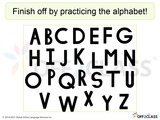
Lesson 3 introduces spelling exercises to challenge your student’s existing knowledge of each letter. It can also be used as a review lesson for more intermediate students.If you want additional lesson plans and support, including teachers’ notes, be sure to register for a free Off2Class account.

The Basic Speller is a spelling program for beginning students and consists of eight volumes of 48 lessons each. It presents lessons and practice for learning the relationships between sounds and their spellings.
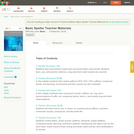
The Basic Speller is a spelling program for beginning students and consists of eight volumes of 48 lessons each. It presents lessons and practice for learning the relationships between sounds and their spellings.
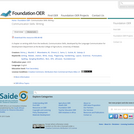
A chapter on writing skills from the textbook, Communication Skills, developed by the Language Communication for Development Department at the Bunda College of Agriculture, University of Malawi.
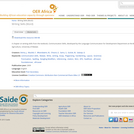
A chapter on writing skills from the textbook, Communication Skills, developed by the Language Communication for Development Department at the Bunda College of Agriculture, University of Malawi.

Boom! Br-r-ring! Cluck! Moo!: Everywhere you turn, you find exciting sounds. Students use these sounds to write their own poems based on Dr. Seuss's "Mr. Brown Can MOO! Can You?"
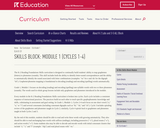
Grade 1: Module 1 of the EL Education K-2 Reading Foundations Skills Block, part of the EL Education K-8 Language Arts Curriculum. The Skills Block provides one hour of structured phonics instruction, to be taught alongside Module Lessons and Labs. For more information on getting started with the K-2 Reading Foundations Skills Block, visit https://curriculum.eleducation.org/about-skills-blocks.
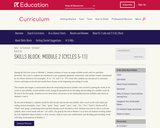
Grade 1: Module 2 of the EL Education K-2 Reading Foundations Skills Block, part of the EL Education K-8 Language Arts Curriculum. The Skills Block provides one hour of structured phonics instruction, to be taught alongside Module Lessons and Labs. For more information on getting started with the K-2 Reading Foundations Skills Block, visit https://curriculum.eleducation.org/about-skills-blocks.
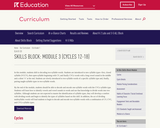
Grade 1: Module 3 of the EL Education K-2 Reading Foundations Skills Block, part of the EL Education K-8 Language Arts Curriculum. The Skills Block provides one hour of structured phonics instruction, to be taught alongside Module Lessons and Labs. For more information on getting started with the K-2 Reading Foundations Skills Block, visit https://curriculum.eleducation.org/about-skills-blocks.
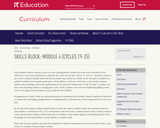
Grade 1: Module 4 of the EL Education K-2 Reading Foundations Skills Block, part of the EL Education K-8 Language Arts Curriculum. The Skills Block provides one hour of structured phonics instruction, to be taught alongside Module Lessons and Labs. For more information on getting started with the K-2 Reading Foundations Skills Block, visit https://curriculum.eleducation.org/about-skills-blocks.
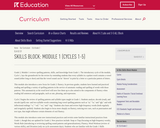
Grade 2: Module 1 of the EL Education K-2 Reading Foundations Skills Block, part of the EL Education K-8 Language Arts Curriculum. The Skills Block provides one hour of structured phonics instruction, to be taught alongside Module Lessons and Labs. For more information on getting started with the K-2 Reading Foundations Skills Block, visit https://curriculum.eleducation.org/about-skills-blocks.
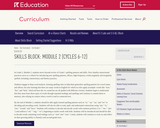
Grade 2: Module 2 of the EL Education K-2 Reading Foundations Skills Block, part of the EL Education K-8 Language Arts Curriculum. The Skills Block provides one hour of structured phonics instruction, to be taught alongside Module Lessons and Labs. For more information on getting started with the K-2 Reading Foundations Skills Block, visit https://curriculum.eleducation.org/about-skills-blocks.
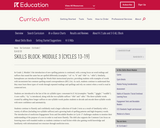
Grade 2: Module 3 of the EL Education K-2 Reading Foundations Skills Block, part of the EL Education K-8 Language Arts Curriculum. The Skills Block provides one hour of structured phonics instruction, to be taught alongside Module Lessons and Labs. For more information on getting started with the K-2 Reading Foundations Skills Block, visit https://curriculum.eleducation.org/about-skills-blocks.
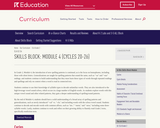
Grade 2: Module 4 of the EL Education K-2 Reading Foundations Skills Block, part of the EL Education K-8 Language Arts Curriculum. The Skills Block provides one hour of structured phonics instruction, to be taught alongside Module Lessons and Labs. For more information on getting started with the K-2 Reading Foundations Skills Block, visit https://curriculum.eleducation.org/about-skills-blocks.
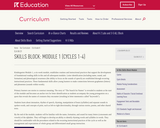
Grade K: Module 1 of the EL Education K-2 Reading Foundations Skills Block, part of the EL Education K-8 Language Arts Curriculum. The Skills Block provides one hour of structured phonics instruction, to be taught alongside Module Lessons and Labs. For more information on getting started with the K-2 Reading Foundations Skills Block, visit https://curriculum.eleducation.org/about-skills-blocks.
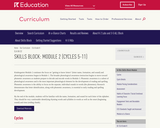
Grade K: Module 2 of the EL Education K-2 Reading Foundations Skills Block, part of the EL Education K-8 Language Arts Curriculum. The Skills Block provides one hour of structured phonics instruction, to be taught alongside Module Lessons and Labs. For more information on getting started with the K-2 Reading Foundations Skills Block, visit https://curriculum.eleducation.org/about-skills-blocks.
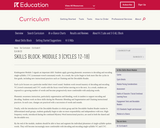
Grade K: Module 3 of the EL Education K-2 Reading Foundations Skills Block, part of the EL Education K-8 Language Arts Curriculum. The Skills Block provides one hour of structured phonics instruction, to be taught alongside Module Lessons and Labs. For more information on getting started with the K-2 Reading Foundations Skills Block, visit https://curriculum.eleducation.org/about-skills-blocks.
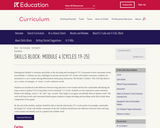
Grade K: Module 4 of the EL Education K-2 Reading Foundations Skills Block, part of the EL Education K-8 Language Arts Curriculum. The Skills Block provides one hour of structured phonics instruction, to be taught alongside Module Lessons and Labs. For more information on getting started with the K-2 Reading Foundations Skills Block, visit https://curriculum.eleducation.org/about-skills-blocks.